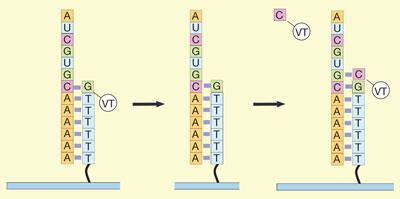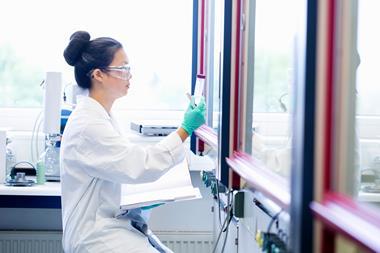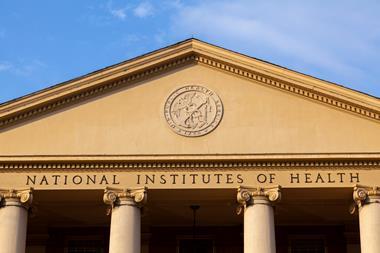New technique allows single molecules of RNA to be sequenced directly without the multiple manipulations currently needed
Scientists in the US appear to have cracked a major problem in molecular biology: how to sequence single molecules of RNA directly. RNA is being increasingly recognised as a key molecule in cells, not only for its traditional role of helping to turn the DNA code into proteins, but for multiple other roles, including the regulation of genes.
However, obtaining the sequence of bases in a strand of RNA requires the circuitous method of converting the RNA sequence into its DNA ’counterpart’ using a process called reverse transcription, followed by the amplification and sequencing of the complementary DNA. The multiple manipulations that are necessary can introduce errors.
Now, researchers at a US biotech company called Helicos, based in Cambridge, Massachusetts, have developed a way to sequence RNA molecules directly. The method involves tethering one end of the RNA strand to a surface and using the exposed chain as a template to construct a complementary strand one base at a time, reading the identity of each new base as it is added.

This is done by constructing the complementary strand from modified nucleotides that have two key attributes: they are fluorescent and they contain a ’virtual terminator’ group that prevents any nucleotides being added further up the chain. One of the four nucleotides that comprise RNA is presented to the RNA strand. If this nucleotide is complementary to the first nucleotide in the strand, it will be ’captured’ and produce a fluorescent signal. The solution is then washed away, the ’virtual terminator’ cleaved from the incorporated nucleotide, and a second nucleotide presented. The process is repeated over multiple cycles, with a fluorescent signal indicating if a given nucleotide has been incorporated into the growing chain.
’In this proof of principle work we were looking at sequencing around 150,000 strands of RNA in parallel,’ says Helicos’s chief scientific officer Patrice Milos. ’In our commercial instrument that has multiple channels we would expect to be able to sequence many millions of molecules over a period of seven or eight days.’
Neil Hall, an expert in RNA sequencing at the University of Liverpool in the UK, says, ’This is an exciting development and shows the potential of single molecule sequencing. It may well be how we will be doing these studies in a few years time.’
J?rgen Kjems, who researches RNA at Aarhus University in Denmark, says that the technique represents an important advance and that in the future it is likely that RNA sequencing will be done in this way. However, the method’s reliability will need to be improved before it is used routinely, he adds.
Simon Hadlington
References
F Ozsolak et al., Nature, 2009, DOI: 10.1038/08390






No comments yet